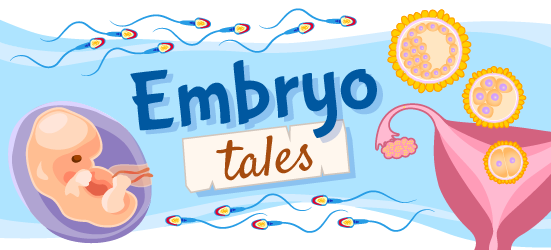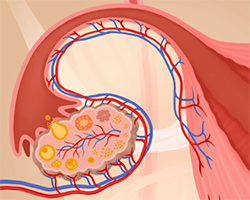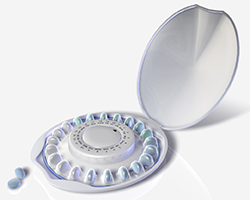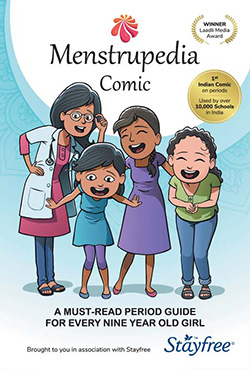
Menstruation Matters
Illustrated by: Sabine Deviche
When was the last time that you saw the doctor? She probably checked your vital signs, like your temperature and blood pressure. Those are both measures of health. Another measure of health for many women is a period, or menstruation.

A period is a sign that a person’s menstrual cycle is working properly. The menstrual cycle prepares the body for pregnancy. Usually girls and women have menstrual cycles. But, anyone with a uterus and ovaries can experience it each month. During that cycle, levels of hormones in the body rise and fall. Those changes help thicken the endometrium and help eggs to mature.
A mature egg leaves an ovary and travels through the fallopian tube, where it can combine with a sperm cell to become a zygote. The zygote divides more and arrives inside the uterus. There, it implants onto the thick endometrium and grows into an embryo. That’s where the embryo gets nutrients during pregnancy.
But the menstrual cycle rarely ends in pregnancy. A period happens when an embryo does not form, so the body does not need the thick endometrium. Instead, it sheds and leaves the uterus through the vagina. This is called menstrual bleeding. Wait… bleeding? That sounds scary. Actually, regular menstrual bleeding is healthy. Let’s learn more about what periods are and why they happen.
It's All in the Ovaries
A lot of people go to the doctor regularly. Periods also tend to happen on a regular basis. That’s because they’re part of a cycle called the menstrual cycle.
Periods happen at the start of the menstrual cycle and usually last five to seven days. A new menstrual cycle begins about every twenty-eight days. Some people have shorter menstrual cycles, others have longer ones. But generally, they happen around once a month.

Typically, girls begin having periods around twelve to fifteen years old. Periods are an important, normal change that lets people know that their bodies are functioning in a healthy way. But periods can also reveal a lot about a person’s overall health. If someone exercises too much, eats too little, or is very stressed, their periods can disappear.
Typically, females stop having periods when they are around fifty years old. Near that age, the female body usually experiences menopause. That is a stage when the ovaries stop creating estrogen.
Body Talk
One hormone that is made in the ovaries is estrogen, and another one is progesterone. The ovaries make varied amounts of those hormones throughout a woman’s life. The levels of those hormones help control the menstrual cycle and cause its side effects.
For example, at the start of the menstrual cycle, there is very little estrogen, which tells the thick endometrium to shed. That’s when a period starts. Changes in hormone levels can also cause acne, bloating, headaches, and mood changes. These effects are called premenstrual syndrome and may happen during the days that lead up to periods.
A person may also have cramps when they are menstruating. Have you ever had a stomachache and felt that unpleasant, twisting pain? That’s what menstrual cramps can feel like. Some people have worse cramps than others. Painful cramps can make someone feel so poorly that they stay home from school or work.
Taking Control of the Menstrual Cycle
Has your doctor ever recommended that you take vitamins to stay healthy? Similar to daily vitamins, some people may take pills to control their menstrual cycles. That may be a solution if their periods are too painful, too heavy, or too unpredictable.

Those are birth control pills, and they usually consist of hormones like estrogen that scientists make in a lab. They put those hormones into different birth control pills. Some birth control pills only have estrogen or progesterone, while others have both. But, the pills may also cause some people to have nausea, mood changes, and weight gain. So, it is important for a person to decide which birth control is the best for their body.
Products for Periods
There are different products that can absorb or collect menstrual blood. Those include, but are not limited to, sanitary pads, tampons, and menstrual cups. Sanitary pads stick to the inside of underwear and absorb menstrual blood. Tampons also absorb menstrual blood but you have to insert them into the vagina. Menstrual cups are a newer and more sustainable way to collect menstrual blood, because you can reuse them. You can insert a menstrual cup into the vagina like a tampon, but it collects menstrual blood inside the cup rather than absorbing it.

It seems like we know a lot about what happens during periods and how to manage them. But was it always like that? Over time, people experimented and learned more about what happens during the menstrual cycle.
Menstruation In History
Periods are not a new thing. The female body has worked in mostly the same way and people have experienced periods since the beginning of human life. Ancient Greek philosopher Hippocrates wrote about periods way back in 400 BCE. As a cure for especially painful periods, he recommended that people become pregnant more often.

Later, Aristotle, another ancient Greek philosopher, even wrote about periods. One of Aristotle’s teachings was that everything has order, including periods. For that reason, he guessed that people who did not have regular periods might have trouble getting pregnant.
Hypothesizing About Hormones
It was not until much later, in 1953, that doctor Katharina Dorthea Dalton explained an important part of periods: premenstrual syndrome. At that time, Dalton noticed that many of her patients had acne, bloating, headaches, and mood changes before their periods. Today, we know those to be symptoms of PMS, or premenstrual syndrome.
Dalton guessed that low amounts of one female hormone, called progesterone, worsened symptoms of PMS. To test her hypothesis, Dalton treated her patients with a unique type of that hormone. If Dalton’s theory was correct, then progesterone would ease her patients’ symptoms. It turned out that it did. Dalton later coined the term PMS to describe her patients’ symptoms. Dalton’s experiment show us how changing amounts of hormones affect the body during the days that lead up to periods.
Menstruation Matters
After Dalton defined premenstrual syndrome, others wrote books to teach people about periods. That information spread in the 1900s when women’s movements emerged. At that time, women fought for equality and representation. One group that did so in the US was the Boston Women’s Health Book Collective. That organization started in the 1960s to teach people about reproductive health. That included teaching about periods.

Today, efforts to educate people about periods continue. In 2014, activist Aditi Gupta published a comic book, called Menstrupedia Comic: The Friendly Guide to Periods for Girls, to teach people in India about periods. The comic book also teaches that periods are normal and nothing to be ashamed of. Lots of people assume periods are gross, but others try to correct those negative ideas. This helps make sure that everyone feels safe and comfortable taking care of their bodies.
This Embryo Tale was edited by Risa Schnebly and is based on the following Embryo Project articles:
Horwitz, Rainey. “Boston Women’s Health Book Collective, later Our Bodies Ourselves (1969–).” Embryo Project Encylopedia (2019-09-06). ISSN: 1940-5030 https://embryo.asu.edu/handle/10776/13123.
Santora, Emily. “Menstrupedia Comic: The Friendly Guide to Periods for Girls (2014), by Aditi Gupta, Tuhin Paul, and Rajat Mittal.” Embryo Project Encylopedia (2020-06-16). ISSN: 1940-5030 https://embryo.asu.edu/handle/10776/13152.
Van Iten, Brendan. “Estrogen and the Menstrual Cycle in Humans.” Embryo Project Encyclopedia (2016-06-22). ISSN: 1940-5030 https://embryo.asu.edu/handle/10776/11344.
Zietal, Bianca. “Katharina Dorothea Dalton (1916–2004).” Embryo Project Encylopedia (2017-05-24). ISSN: 1940-5030 https://embryo.asu.edu/handle/10776/11515.
Read more about: Menstruation Matters
Bibliographic details:
- Article: Menstruation Matters
- Author(s): Emily Santora
- Publisher: Arizona State University School of Life Sciences Ask A Biologist
- Site name: ASU - Ask A Biologist
- Date published:
- Date accessed:
- Link: https://askabiologist.asu.edu/embryo-tales/menstruation
APA Style
Emily Santora. (). Menstruation Matters. ASU - Ask A Biologist. Retrieved from https://askabiologist.asu.edu/embryo-tales/menstruation
Chicago Manual of Style
Emily Santora. "Menstruation Matters". ASU - Ask A Biologist. . https://askabiologist.asu.edu/embryo-tales/menstruation
Emily Santora. "Menstruation Matters". ASU - Ask A Biologist. . ASU - Ask A Biologist, Web. https://askabiologist.asu.edu/embryo-tales/menstruation
MLA 2017 Style

Why is talking about periods something that makes some people uncomfortable? Artist Sarah Maple's art piece "Menstruate with Pride" carries her message about how some women feel about periods.
Be Part of
Ask A Biologist
By volunteering, or simply sending us feedback on the site. Scientists, teachers, writers, illustrators, and translators are all important to the program. If you are interested in helping with the website we have a Volunteers page to get the process started.
